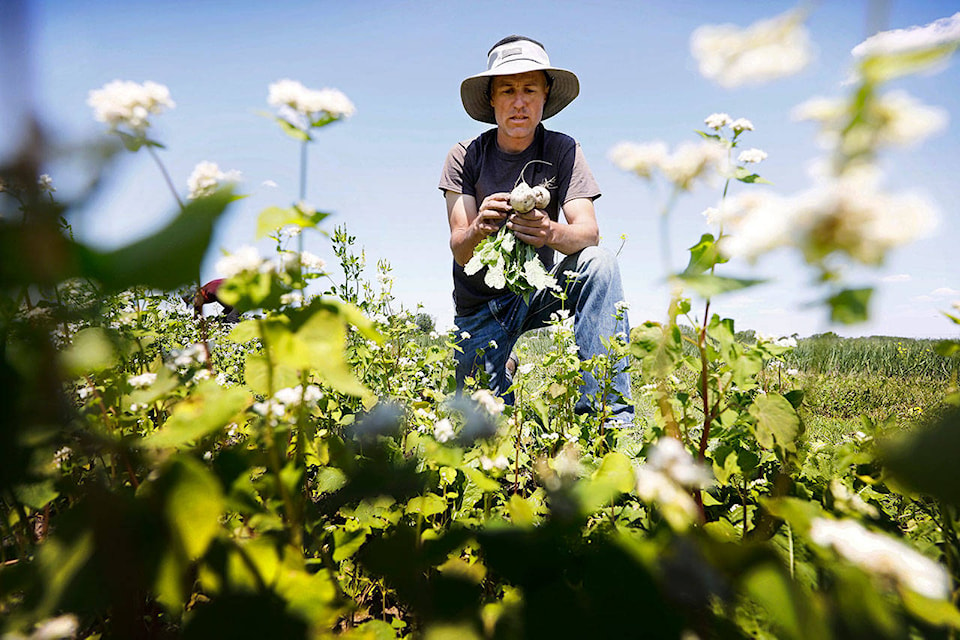A Comox Valley couple is facing a big increase this year to insure their property and farm. After paying $3,200 last year, Amara Farm owners Neil Turner and Arzeena Hamir have been scrambling to find about $7,000 to pay for farm and rural insurance.
Turner said they are also being heavily scrutinized for solar panel installation, which requires an engineer’s report, which could cost $1,000.
“I’m almost double, regardless of getting through this,” said Turner, noting neighboring farmers are also struggling to pay insurance. “For a lot of small farmers, three or four thousand bucks, on top of what you paid before, it could be your profit for the year.”
Alan Fletcher, who owns 25 acres on Hornby Island, was looking at a $7,500 insurance increase from last year. After some back-and-forth with an agent, he agreed to add a home security system to cover fire and entry, which dropped the price from about $11,000 to $5,500.
“Still a lot of money, plus I have to pay for a security system ($1,000) and a monthly monitor of $40,” Fletcher said.
The B.C. Financial Services Authority says farm insurance is a specialized form of commercial insurance. A “hardening” (period of higher rates and reduced underwriting capacity) in the Canadian and global commercial insurance markets is causing a spike in premiums. Some commercial properties have seen significant increases. The hardening is related to losses from a prolonged underpriced market, reinsurance requirements and catastrophe losses. For B.C., the authority said new research indicates higher potential losses from earthquakes.
“All these factors have created a situation where commercial insurers have repriced premiums higher to return to profitability,” the BCFSA said in a statement.
Commercial insurance, particularly in B.C., has been experiencing “some really significant market pressures,” said Rob de Pruis, director consumer and industry relations at the Insurance Bureau of Canada (IBC). The pressures are due in part to an increase in property and liability claims, and to severe weather claims. He also notes macro-economic conditions, whereby insurance companies obtain capital either from premiums of policy holders (underwriting income), or from investment income.
“For many years, the insurance industry has not had sufficient underwriting income to pay all the claims,” de Pruis said. “Over a number of years, we’ve seen really low returns on investment, on average, for the insurance industry…It’s a common supply and demand issue.”
Another factor is the pandemic, which has affected every business and organization in Canada.
“The insurance industry is no different,” de Pruis said. “Across the country, there’s tens of thousands of businesses that are going out of business (and cancelling their insurance).”
The B.C. Finance Ministry notes that government does not set insurance rates or regulate pricing.
“However, we continue to monitor the issue and will consider what steps may be taken,” the ministry said. “The pricing of insurance is a business decision undertaken by insurers, based on analysis to anticipate the expected frequency and severity of future claims.”
Various factors come into play to calculate premiums, especially in the commercial insurance marketplace. de Pruis said policies generally fall into two categories: contents (machinery and equipment) and liability. Farm operations, for example, are exposed to various liability exposures, such as business interruption losses.
“Really, it’s about the type of policy that you choose and the limits you have,” he said.
Another factor is replacement cost of a property, which typically increases yearly, based on inflation.
de Pruis said government has a role to play by strengthening building codes and improving land use planning. Insurance companies can help by making products available at an affordable cost. Business owners also need to consider what they can do to reduce their chance of loss or damage.
de Pruis advises residents to regularly review their policy and coverages with their insurance rep.
“Know your risks, and understand what you can be doing to reduce some of these risks and lower your premium,” he said.
The IBC has created a National Commercial Insurance Task Force to better understand issues driving increased costs in commercial insurance.
View an IBC-commissioned report at: bit.ly/3jo0kaj
